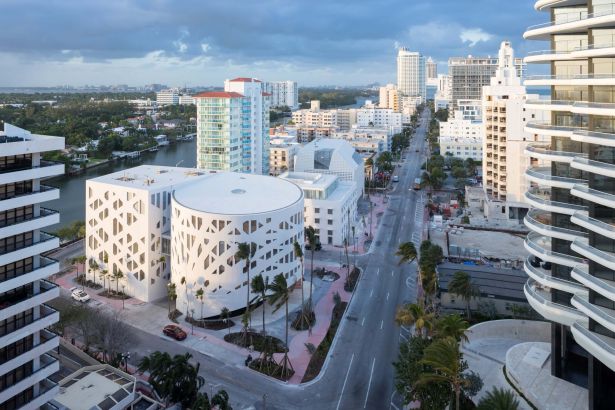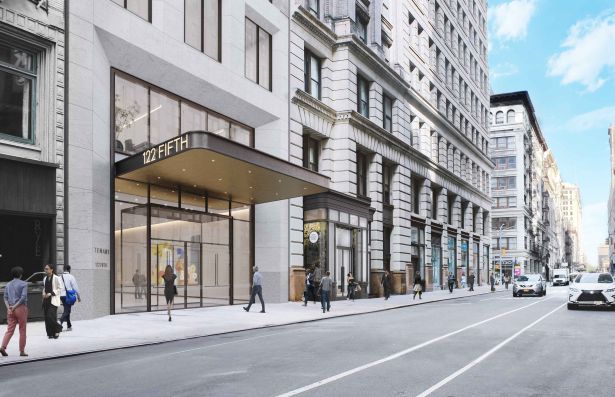Presented By: Walker & Dunlop LLC
Helping Clients Prosper: Walker & Dunlop’s Experience Throughout the Capital Stack
Future Of Capital Markets Coast to Coast, brought to you by Walker & Dunlop
By Walker & Dunlop LLC May 31, 2022 7:00 am
reprints
Walker & Dunlop is one of the nation’s top commercial real estate finance companies, with $68B in transactions under their belt in 2021. This vast experience has made them a top adviser on all asset classes for many of the industry’s top developers. Partner Insights spoke with Mo Beler, Senior Managing Director, Capital Markets for Walker & Dunlop, and Jonathan Schwartz, Senior Managing Director & Co-Head NY Capital Markets for Walker & Dunlop, to learn the current conditions and latest trends within commercial real estate’s asset classes.
Commercial Observer: What types of financing does Walker & Dunlop do?
Jonathan Schwartz: We find solutions across the entire capital stack, whether it’s construction financing, permanent loans, heavy value-add bridge loans, or light value-add deals. It really runs the gamut. We pride ourselves on being creative deal makers that can simplify complex structures for our clients. That’s a unique feature of our team.
Mo Beler: That’s exactly right. We look at the entire capital stack to determine the optimal and achievable financing in the marketplace, in conjunction with the size of the equity, to create the most flexible and cost-effective structures for our clients.
How does it benefit your clients that you have equal expertise on the debt and equity sides?
Schwartz: We’re focused on tailoring financing for clients’ business plans. We think holistically about advising our clients on the parties with whom they should transact as lenders and those with whom they should partner from an equity perspective. Our goal is to create lasting relationships for our clients with both debt and equity providers.
Let’s look at the asset classes, starting with industrial. Given your vast communications with people throughout CRE, what are you seeing there?
Beler: Industrial is a favored asset class due to continued growth in the e-commerce spend space. Ecommerce sales for 2021 were estimated at $870.8 billion, and are projected to grow to over a trillion dollars over the next year. Every $1 billion increase in online shopping translates to anywhere from 1 million to a million and a quarter square feet of active tenant user demand. Driven by e-commerce demand, last-mile distribution was key; we were on the forefront of the urban infill, multistory industrial trend, advising our clients on the capitalization of 640 Columbia Street, a three-story, 336,350-square-foot logistics facility just minutes from downtown Manhattan.

Schwartz: We advised and structured a joint venture for DHPH to buy $1 billion-plus of existing industrial product with a $250 million commitment from a life insurance company, which we’ve been financing as they acquire assets. We believe that industrial cap rates will remain low on a national scale as a result of continued revenue growth that we’re seeing persist through the market.
What trends are you seeing in hotels?
Schwartz: Investors are focused on quality. From a debt perspective, we’re doing a significant amount of hotel financing right now in New York, Miami, and L.A. We just closed a loan to refinance The ACE HOTEL in Downtown Brooklyn that was well received by the capital markets. We’re refinancing the Faena Hotel in Miami. We arranged financing for the Goodtime Hotel, also in Miami, with JPMorgan and CIM.



Are hotels still being converted to other sectors, like multifamily?
Beler: A recent trend that we are seeing is the conversion of defunct, select-service hotels that have significant deferred maintenance to multifamily. We see that as a real opportunity in the space considering the arbitrage between acquiring at hospitality yields and stabilizing them to multifamily yields.
Talk about the status of the office sector.
Schwartz: It’s a flight to quality. Class A buildings are garnering premiums in rental rates, and are leased to credit and financially stable tenants that are focused on curating the optimal work environment for their employees. We recently closed a refinance for East End Capital on a boutique, 79,000-square-foot, Class A office building in the Lower East Side. Additionally, we arranged financing for the redevelopment of 122 Fifth Avenue on behalf of The Bromely Companies. They put a plan in place to fully re-imagine this asset and have successfully pre-leased a portion of the building to Microsoft, which signed a 10-year lease for half the building. So there’s strong demand in the Class A space. For the balance of the market, we think there’s going to be some pain.

Now let’s talk about a sector that’s been troubled for awhile – retail. Where does it stand today?
Beler: Grocery-anchored, necessity-based retail will always appeal to core buyers. Throughout COVID, large-scale investment managers wanted to downsize their retail footprint and increase allocations towards industrial and multifamily, and one way to do that was to sell their grocery-anchored portfolios. But they disposed of too much. Now they want to rebalance and are looking to reacquire.

Now let’s talk about multifamily.
Beler: Multifamily is booming around the country. One challenge we encountered as advisers during the pandemic was raising capital for ground-up high-rise. Our solution was the ground lease bifurcation, whereby rather than finding a common bid to capitalize a project, we decided to break down the components between the fee leasehold and create, across many transactions, 90-95 percent effective financing.
Schwartz: We’re capitalizing a number of high-profile, large-scale construction loans on the multifamily front at this time. For instance, we are marketing a $400 million loan for a 51-story tower for Witkoff and Apollo in Downtown Brooklyn. At 470 Kent on the South Williamsburg waterfront, we are marketing a $375 million loan on a three-tower, Class A multifamily and condo development. In addition to our assignments in New York, we are actively marketing construction loans in Denver, Miami, Nashville and Los Angeles.
Talk about your outlook for the New York City market and where it’s going.
Schwartz: We have been back in our office full time since the summer of 2020. We continue to see occupancy increase in the office sector, and multifamily rents are at all-time highs with virtually no vacancy. New York remains a city where young people want to live, work and play. Because of that, New York will continue to thrive.
View more articles on capital markets from coast to coast here.



